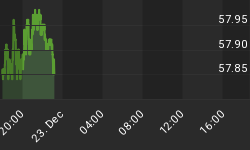9/9/2010 9:08:54 AM
The market is defying all of those newsletters calling for a move lower...
Recommendation:
Take no action.
Daily Trend Indications:

- Positions indicated as Green are Long positions and those indicated as Red are short positions.
- The State of the Market is used to determine how you should trade. A trending market can ignore support and resistance levels and maintain its direction longer than most traders think it will.
- The BIAS is used to determine how aggressive or defensive you should be with a position. If the BIAS is Bullish but the market is in a Trading state, you might enter a short trade to take advantage of a reversal off of resistance. The BIAS tells you to exit that trade on "weaker" signals than you might otherwise trade on as the market is predisposed to move in the direction of BIAS.
- At Risk is generally neutral represented by "-". When it is "Bullish" or "Bearish" it warns of a potential change in the BIAS.
- The Moving Averages are noted as they are important signposts used by the Chartists community in determining the relative health of the markets.
Current ETF positions are:
Long at DIA $102.80
Long QQQQ at $44.76
Daily Trading Action
The major index ETFs opened higher and ramped steadily higher on the market open. For most equity indexes, the zenith was reached around 11:00am with a gradual erosion in price following. Equity indexes made an attempt to move higher and challenge the level of the morning lows but it was only the NASDAQ-100 that succeeded in that attempt by around 1:00pm. The markets once again moved lower for an hour until the Fed released its beige book and the markets once again moved higher but never reached even the level of the second day's high before once again succumbing to some intraday profit taking closing well off their highs. The Dow rallied up to its 200-Day Moving Average (DMA) at its peak and the NASDAQ-100 closed well above that important level. The Russell-2000 (IWM 63.48 +0.37) gained more than one half of one percent but again traded up to resistance of the downtrend line drawn from the April 26th high and through the July 27th high and many highs that followed that date. The Semiconductor Index (SOX 320.90 -1.41) continues to behave badly (relative to the other equity indexes) and moved a half of one percent lower on the day. The Bank Index (KBE 22.79 +0.30) gained nearly one and a half percent while the Regional Bank Index (KRE 22.16 +0.22) gained one percent. The 20+ Yr Bonds (TLT 104.86 -0.84) lost a fraction of one percent and closed on its 20-DMA. NYSE volume was light with only 866M shares traded. NASDAQ volume was average with 2.004 shares traded.
There was a single economic report of interest released as well as the Fed's Beige Book:
- Consumer Credit (Jul) came in at -$3.6B versus an expected -$5.25B
The report wasn't released until an hour before the close and although the market did sell off a bit from that time, it wasn't particularly market moving in itself. The Fed released its Beige book and hour earlier which did help the market to rally as it confirmed what Fed spokespersons have been saying. That is, the economy doesn't' appear to be headed for a double dip but rather appears to be continuing a somewhat lethargic expansion and recovery.
The major indexes were led higher by a rise in the bank indexes. The interest in the Portuguese debt auction and its ultimate success helped European stock indexes to rally which carried over into U.S. markets. In fact, it was the optimism that powered U.S. banks higher, which helped Financials (+1.1%) to have the best sector performance of the day. Nine out of ten economic sectors in the S&P-500 moved higher on the day while only Utilities (-0.5%) moved lower.
The dollar continued to slide with the Euro seeing a gain of +0.3% while the pound moved +0.7% higher.
Implied volatility for the S&P-500 (VIX 23.25 -0.55) fell modestly to close at its 200-DMA. Implied volatility for the NASDAQ-100 (VXN 23.53 -0.46) also fell modestly sitting below its 200-DMA.
The yield for the 10-year note rose four basis points to close at 2.65. The price of the near term futures contract for a barrel of crude oil rose fifty-eight cents to close at $74.67.
Market internals were positive with advancers leading decliners by 2:1 on both the NYSE and the NASDAQ. Up volume led down volume 3:1 on the NYSE and by 7:3 on the NASDAQ. The index put/call ratio fell 0..96 to close at 1.51. The equity put/call ratio fell 0.06 to close at 0.54.
Commentary:
Wednesday's trading was about what we expected and the opposite of what pretty much every financial newsletter writer has been expecting. Equities are at a key juncture with the 200-DMAs in play as resistance area, but the NASDAQ-100 has twice moved above that level. The Russell-2000 continues to be constrained by an intermediate term downtrend line and the Dow by its 200-DMA. A break out for the Russell-2000 and the Dow might finally break the backs of the bears and let the market reach a high such that profitable short positions could finally be put on. Until then, we feel we have to stay with our long positions and wait for bears to throw in the towel.
Volume hasn't yet returned to pre-summer levels on the NYSE but the NASDAQ saw a nice increase in volume up to average. Of course, that average has come down a long ways since the summer dip in volume and we await the return of more significant volume by next week.
We hope you have enjoyed this edition of the McMillan portfolio. You may send comments to mark@stockbarometer.com.
















